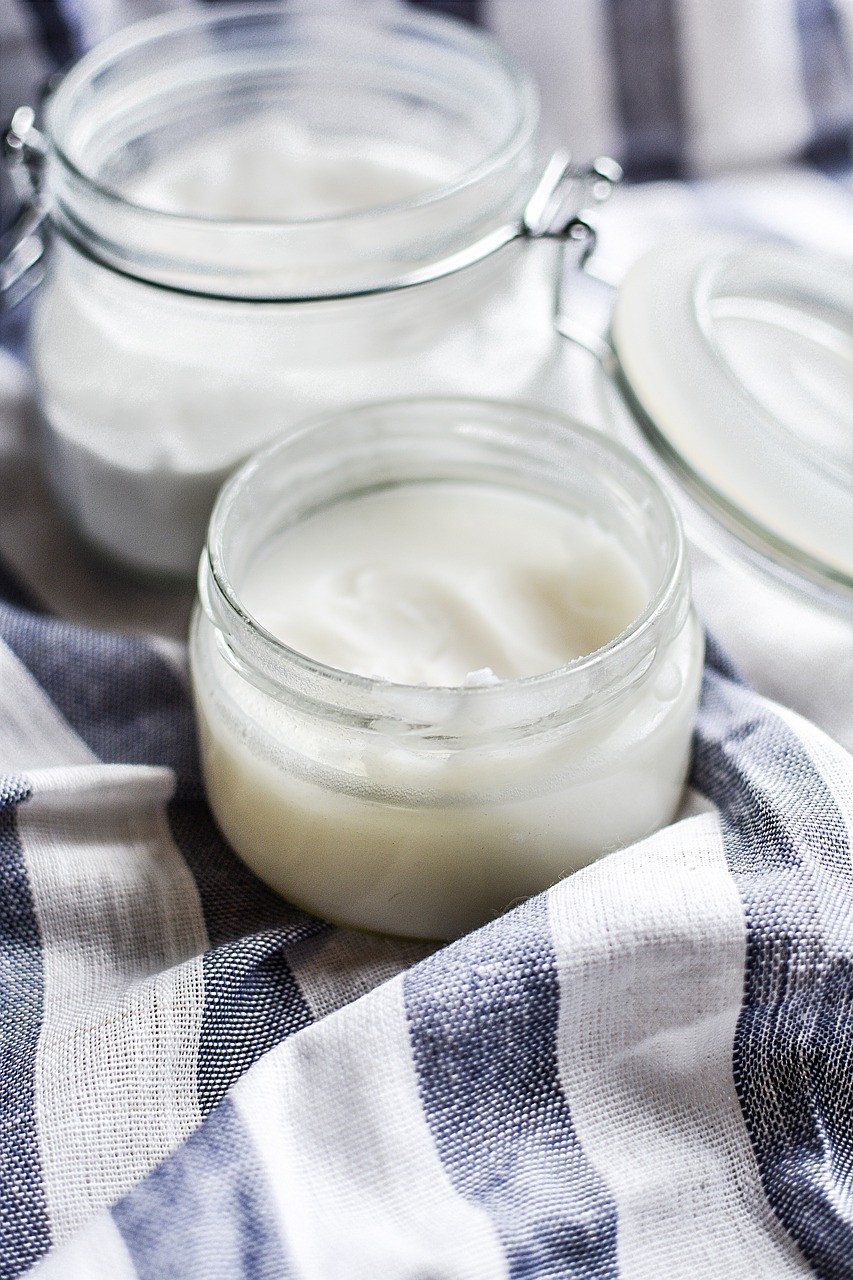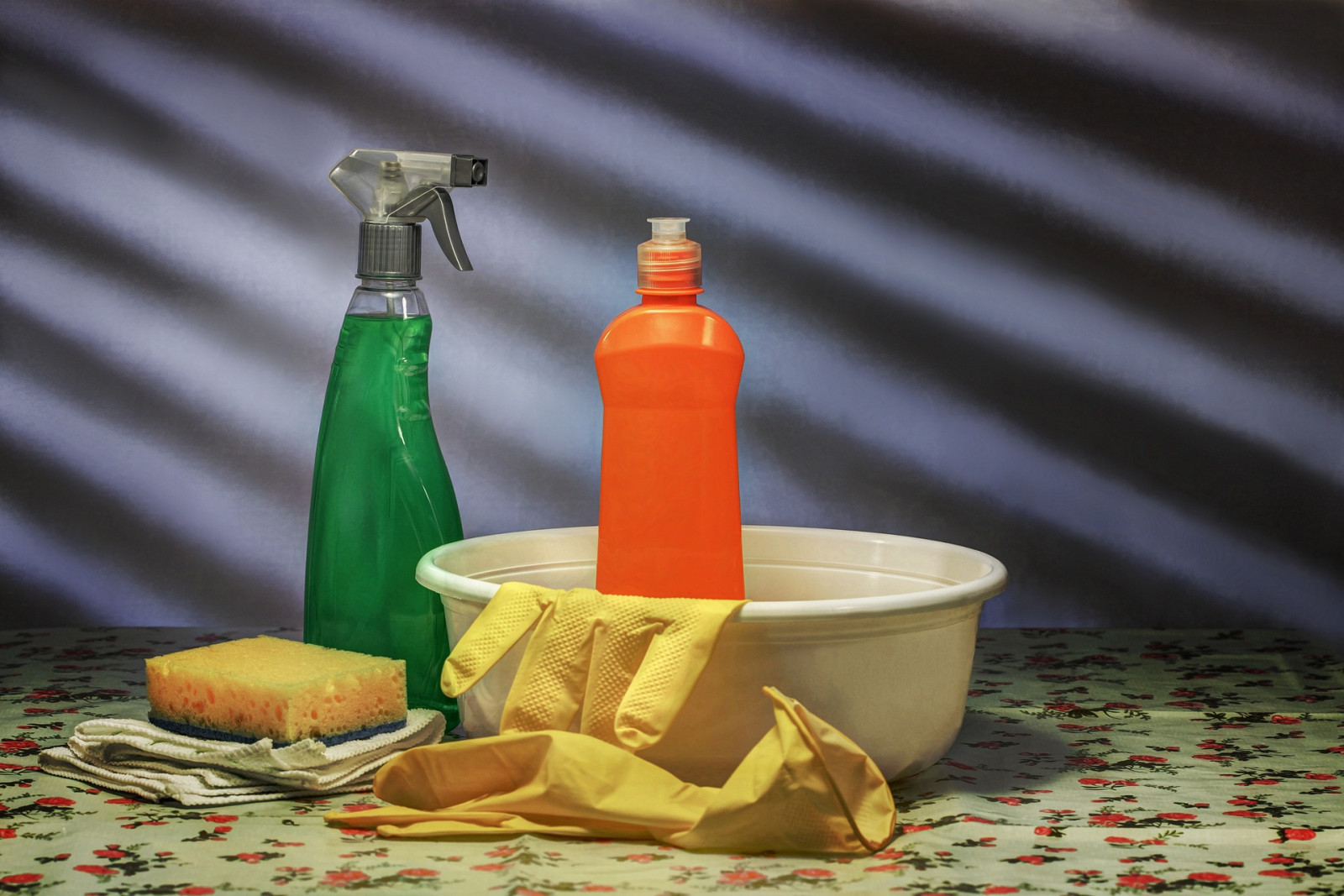Ready to kickstart your toxin-free living journey? Your home is the perfect place to start. Uncover the harmful chemicals lurking in your daily products and discover natural alternatives for a healthier, happier life.
When I was first learning about toxins in products in my home, I was horrified. I wanted to get rid of everything and start over immediately! I had children that I didn't want to expose to chemicals, and I was having daily headaches that I was learning were associated with my cleaning products. I wasn't able to switch out everything at once, but I started with a few things, and then worked to replace other things as I went along and learned more. I can happily say that both my asthma and my daily headaches are no longer a problem! It was a bit of a transition, but it was well worth it! The products I recommend below are the actual products I use. I also make quite a few DIYs that are simple and quick - because with 7 children, I don't have time for complicated!
Say No to Harmful Ingredients
Being informed about harmful substances is the first step toward a safer home. This is not a comprehensive list - but it's a start! Here’s a deeper look at some of the most common toxic ingredients found in household products:
- Phthalates: Often found in air fresheners and vinyl flooring, these chemicals can disrupt hormonal balance and have been linked to reproductive issues.
- Parabens: Commonly used as preservatives in cosmetics, parabens can mimic estrogen and may lead to endocrine disruption, potentially causing reproductive and developmental problems.
- Triclosan: Once a prevalent ingredient in antibacterial soaps, triclosan contributes to antibiotic resistance and can disrupt hormonal systems.
- Formaldehyde: Often found in cleaning products and personal care items, formaldehyde is a known irritant that can exacerbate respiratory issues and allergic reactions.
- SLS/SLES (Sodium Lauryl Sulfate/Sodium Laureth Sulfate): These surfactants, commonly used in shampoos and toothpastes, can irritate skin and eyes and may disrupt the skin's barrier function.
- Synthetic Fragrances: Used to create pleasant scents in products, synthetic fragrances can contain hundreds of hidden chemicals that can harm health and provoke allergic reactions.
Embrace Natural Cleaning Solutions
Making the switch to natural cleaning products not only benefits your health but also the environment. Here are some effective DIY alternatives you can create at home:
- All-Purpose Cleaner: Combine equal parts water and vinegar in a spray bottle, and add 10-15 drops of essential oils such as tea tree or citrus for antimicrobial properties and a fresh scent.
- Castile Soap: This biodegradable soap is a versatile cleaning agent. Mix it with water for a gentle dish soap, or dilute it for mopping floors.
- Baking Soda: Use baking soda for scrubbing surfaces and deodorizing areas, from the fridge to carpets, ensuring a fresh-smelling home without harsh chemicals.
- My Favorite Concentrated Cleaner: This is so economical and cleans and smells the best!
Opt for Safer Deodorants
Aluminium-free deodorants can effectively neutralize odors without blocking sweat glands.
This is what I use, or you can create your own using coconut oil, baking soda, and essential oils for a personalized scent.
Freshen Your Air Naturally
Instead of chemical-laden air fresheners, consider these natural alternatives:
- Essential Oil Diffusers: Diffusing pure essential oils like lavender or eucalyptus can purify the air and provide soothing aromas.
- Houseplants: Incorporate indoor plants like peace lilies or snake plants, which naturally filter toxins and create a calming atmosphere.
- DIY Sprays: Create your own air freshener by mixing water with a few drops of your fave essential oils in a spray bottle.
Cleanse Your Skin with Natural Lotions
Opt for moisturizers free from harmful ingredients. Shea butter and coconut oil are excellent natural options that hydrate without chemicals. Look for brands that prioritize pure ingredients and sustainability.
Choose Sulfate-Free Shampoos
To protect your hair, select sulfate-free shampoos from brands like this one. Alternatively, experiment with a DIY shampoo made from baking soda mixed with water; it gently cleanses without stripping hair.
Enhance Your Beauty Routine Naturally
Swap conventional makeup for mineral-based options, which often contain fewer harmful chemicals and focus on skin health.
Laundry Day Made Safe
Opt for natural, plant-based detergents such as this one. For more eco-friendly alternatives, try soap nuts, which are gentle on fabrics and the environment.
Eco-Friendly Dishwashing
Use biodegradable dish soaps like this one or concoct your own by mixing Castile soap with water and essential oils for a natural cleaning solution that’s tough on grease yet gentle on hands.
Transforming Your Home Step by Step
Start small by implementing gradual changes towards a toxin-free sanctuary for you and your family. Each step counts, and by making informed choices, you'll work towards a healthier living space. Join our community of Holistic Super Moms for tips, support, and motivation as you create a holistic, natural lifestyle that prioritizes well-being for you and your loved ones.
My blogs contain some affiliate links.
Any purchase made is a blessing to my family at no extra cost to you!
Thank you for supporting us!


Oil pulling is an ancient practice that has gained popularity in modern wellness routines for its potential benefits in oral health and overall detoxification. If you're new to this practice, this guide will help you understand the basics of oil pulling and how to incorporate it into your daily routine effectively. Looking for tips for oil pulling for kids? Find them here.
What is Oil Pulling?
Oil pulling is a traditional Ayurvedic practice that involves swishing oil in your mouth for a specified period. This practice is believed to help "pull" toxins from the body, improve oral hygiene, and provide various health benefits. Typically, coconut, sesame, or sunflower oil is used for this purpose.
Benefits of Oil Pulling
1. Oral Health: Oil pulling can help reduce plaque, gingivitis, and bad breath. The oil acts as a cleanser, pulling out bacteria and other toxins from the mouth.
2. Whiter Teeth: Many people report that their teeth become whiter after regular oil pulling.
3. Detoxification: Some proponents believe that oil pulling helps to detoxify the body by removing harmful substances from the mouth.
4. Improved Gum Health: The practice can help reduce inflammation and promote healthier gums.
Choosing the Right Oil
The most commonly used oils for oil pulling are:
- Coconut Oil: Favored for its pleasant taste and additional antibacterial properties due to lauric acid. This is my favorite option. You can use unrefined or fractionated, depending on your preference. Unrefined has a stronger flavor.
- Sesame Oil: Traditionally used in Ayurvedic practices, it is rich in antioxidants and has a neutral flavor.
- Sunflower Oil: Another option with a mild taste and good cleansing properties.
- Mustard Oil: This option is vitamin and mineral rich, and also contains Omega 3s.
Choose an organic, cold-pressed oil to ensure the highest quality and avoid any harmful additives.
Enhancing Oil Pulling with Essential Oils
Incorporating essential oils into your oil pulling routine can amplify its benefits. Essential oils are concentrated plant extracts known for their beneficial properties.
Essential Oils to Add to Your Oil Pulling Routine
- Composition: This powerful blend typically includes cinnamon, clove, lemon, eucalyptus, and rosemary oils.
- Benefits: Thieves blend is known for its potent healthful properties. It can help in support immunity, reducing inflammation, and freshening breath. The warming sensation of cinnamon and clove combined with the refreshing citrus notes of lemon creates a robust, invigorating experience. (This is a "hot" oil, be sure to use extra coconut oil if it gets on your skin)
- Benefits: Peppermint oil is renowned for its cooling, refreshing sensation. It has natural properties that can help support the mouth, reduce bad breath, and promote a fresh feeling. The menthol in peppermint oil also provides a pleasant tingle and can soothe oral discomfort.
- Benefits: Frankincense oil is revered for its calming and balancing qualities. It has specific properties that support gum health and reduce oral infections. Its subtle, earthy aroma can also add a grounding, soothing aspect to your oil pulling routin
How to Oil Pull: Step-by-Step Guide
1. Start with a Clean Mouth: Perform oil pulling on an empty stomach, preferably first thing in the morning before you eat or drink anything.
2. Measure Your Oil: Take about 1 tablespoon of your chosen oil. Beginners might find it easier to start with a smaller amount and gradually increase.
3. Choose Your Essential Oil (Optional: Select an essential oil that complements your needs and preferences. Ensure it is safe for oral use.
4. Mix with Oil: Add 1-2 drops of your chosen essential oil to your tablespoon of carrier oil (like coconut, sesame, or sunflower oil). Avoid using more than a few drops as essential oils are highly concentrated.
5. Swish the Oil: Place the oil in your mouth and begin to swish it around. Move the oil slowly and methodically, pulling it through your teeth and around your gums. Avoid swallowing the oil.
6. Duration: Aim to swish the oil for 15-20 minutes. If this feels too long initially, start with 5-10 minutes and gradually increase the duration as you become more comfortable.
7. Spit Out the Oil: After swishing, spit the oil into a trash can, not the sink, as it can solidify and clog your pipes.
8. Rinse Your Mouth: Rinse your mouth with warm water to remove any remaining oil and toxins. Some people like to rinse with salt water for added antibacterial benefits.
9. Brush Your Teeth: Finish your routine by brushing your teeth as usual to ensure all oil and toxins are removed from your mouth.
Tips for Beginners
- Consistency is Key: Try to oil pull daily to reap the full benefits.
- Stay Relaxed: Swish gently to avoid jaw fatigue.
- Be Patient: It may take a few weeks to notice significant changes in your oral health.
Precautions
- Oil pulling should not replace regular oral hygiene practices like brushing and flossing.
- People with allergies to specific oils should choose an alternative or consult their healthcare provider.
- Always spit out the oil after pulling; do not swallow it as it contains bacteria and toxins.
- Test for Sensitivity: Perform a patch test to ensure you don’t have any allergic reactions or sensitivities to the essential oil.
- Quality Matters: Use high-quality, authentic essential oils from a reputable source.
- Start Slow: Begin with a small amount of essential oil and observe how your body reacts. You can gradually increase the quantity if needed.
- Consult a Professional: If you have any health concerns or conditions, consult with a healthcare provider who is knowledgeable about essential oils before incorporating them into your routine.
Frequently Asked Questions
Q: Can I use oil pulling if I have dental work or braces?
A: Yes, oil pulling can be safe and beneficial even if you have dental work or braces. However, consult your dentist if you have any concerns.
Q: How soon can I eat or drink after oil pulling?
A: It’s best to wait about 30 minutes after oil pulling before consuming anything to allow the benefits to take full effect.
Q: Can I oil pull at night instead of in the morning?
A: While mornings are preferred, you can oil pull at any time of day. The key is to do it on an empty stomach.
Q: How often should I practice oil pulling?
A: Daily oil pulling is recommended for the best results, but even a few times a week can be beneficial.
---
Starting a new health practice can feel daunting, but oil pulling is a simple and effective way to enhance your oral health routine. Adding essential oils to your oil pulling practice can provide a delightful boost to your oral care routine, making it more effective and enjoyable. Whether you're seeking the robust protection of Thieves blend, the refreshing coolness of peppermint, or the soothing essence of frankincense, there's an essential oil that can enhance your daily wellness ritual. Give it a try, and you might find it to be a refreshing addition to your wellness habits!
---
Sources:
- "Oil Pulling: Benefits & How to Do It," Healthline, (https://www.healthline.com/nutrition/oil-pulling-coconut-oil#how-to-oil-pull)
- "Oil Pulling with Coconut Oil," WebMD, (https://www.webmd.com/oral-health/oil-pulling-coconut-oil)
- "Essential Oils in Oil Pulling: How They Work," Wellness Mama, (https://wellnessmama.com/natural-beauty/essential-oils-oil-pulling/)
- "The Benefits of Adding Essential Oils to Oil Pulling," Dr. Axe, (https://draxe.com/essential-oils/essential-oils-oil-pulling/)
My blogs contain some affiliate links.
Any purchase made is a blessing to my family at no extra cost to you!
Thank you for supporting us!


Are you tired of using harsh cleaning products that can harm your health, increase inflammation, and even worsen indoor air pollution? Say hello to Thieves Household Cleaner, the all-natural solution to your cleaning woes! Made by Young Living, a company dedicated to producing essential oils for various purposes. This cleaner contains a powerful blend of essential oils including cinnamon, rosemary, and clove that work together to eliminate bacteria, viruses, and harmful microbes from your surfaces.
Conventional cleaning products that contain toxins like phthalates, triclosan, and formaldehyde can cause skin irritation, respiratory problems, and even cancer. Additionally, these chemicals can contribute to indoor air pollution, which can have severe health effects. Unlike conventional cleaners, Thieves Household Cleaner relies on trusted plant-based ingredients that are safe and gentle on your skin and respiratory system. You can use it to clean and disinfect any surface in your home, from kitchen counters to bathroom fixtures and even floors! From general cleaning tasks to stubborn stains that just won't budge, Thieves Household Cleaner can handle it all. It saves you a ton of $$$ that you would have spent on other nasty, chemical-laden cleaners. This also means that you can use one cleaner to clean your entire home, rather than having to buy a separate cleaner for each specific area or surface.
Thieves Household Cleaner is not only effective at cleaning surfaces, but it also leaves a pleasant, natural scent. The essential oils used in the cleaner provide a refreshing and natural fragrance from essential oils, which can help to boost your mood and improve the overall ambiance of your home. It's one of my favorite scents - I've been using it for over 15 years!
So, don't wait any longer to experience the benefits of Thieves Household Cleaner! Detoxify your home the natural way and enjoy a safer, more effective, and more pleasant cleaning routine. The natural ingredients in the cleaner work together to eliminate harmful pathogens from surfaces, while also providing a safe and effective alternative to conventional cleaning products. But don't just take it from me! If you're ready to ditch those harsh "off the shelf" cleaners and go green, try Thieves Household Cleaner today, and see how it works for you!
My blogs contain some affiliate links.
Any purchase made is a blessing to my family at no extra cost to you!
Thank you for supporting us!


Toxins in the environment are all around us, and they can be a major contributor to chronic inflammation within our bodies. Chronic inflammation is a major risk factor for many illnesses, such as heart disease, cancer, and autoimmune disorders. Therefore, it is important to understand how environmental toxins can cause inflammation and what we can do to protect ourselves.
One of the ways toxins in the environment cause inflammation is through oxidative stress. Oxidative stress occurs when there is an imbalance between the harmful free radicals (molecules with an unpaired electron) and the body's resources to counteract them (antioxidants). Exposure to chemicals such as air pollution, pesticides, household chemicals (including products like shampoo and lotion), and tobacco smoke can cause oxidative stress, leading to inflammation and damage to cells.
Another way toxins can cause inflammation is through disruption of the gut microbiome. In recent years, studies have shown that the gut is a critical component of our immune system and plays a key role in modulating inflammation. Exposure to toxins can disrupt the balance of gut bacteria, leading to dysbiosis (an imbalance in the gut microbiome) and inflammation.
Toxins can also cause inflammation by modulating gene expression. Certain chemicals can bind to our DNA and alter gene expression, leading to inflammatory responses. Studies have shown that exposure to environmental toxins such as benzene, asbestos, and lead can trigger chronic inflammation in the body.
So, what can we do to protect ourselves from environmental toxins and reduce inflammation in the body? Here are some tips:
- Eat an anti-inflammatory diet. Focus on foods that are rich in antioxidants and anti-inflammatory nutrients such as fruits and vegetables, nuts and seeds, and fatty fish such as salmon.
- Engage in regular physical activity. Exercise can help to reduce inflammation by stimulating the release of endorphins, which have anti-inflammatory effects.
- Reduce exposure to air pollutants. Consider using an air purifier in your home and avoid exercising in heavily polluted areas. Throw away your plug-ins and candles.
- Manage stress levels. Chronic stress can lead to inflammation in the body, so finding healthy ways to manage stress such as meditation, yoga, essential oils, or deep breathing can be beneficial.
Toxins in the environment can cause inflammation and contribute to the development of chronic illnesses. By taking steps to reduce exposure to harmful chemicals, eating an anti-inflammatory diet, exercising regularly, and managing stress levels, we can protect ourselves against the harmful effects of environmental toxins and support a healthy, inflammation-free body.
My blogs contain some affiliate links.
Any purchase made is a blessing to my family at no extra cost to you!
Thank you for supporting us!


Read part 1 first.
Let's talk specific laundry ingredients!!! What causes the problems with laundry detergent?
Many of us don’t think twice about the laundry soap we use, but many commercial detergents contain a frightening array of hazardous chemicals that can harm our health. From asthma to skin irritation, it is important to be aware of the toxins lurking in our laundry soaps — and consider safer alternatives.
From endocrine-disrupting compounds to carcinogens, here are some of the common toxins found in laundry soap:
- Phthalates - These have been linked to reproductive problems, developmental problems (with unborn babies) and hormone disruption, as well as heightened risk of asthma and allergies in children.
- Fragrances & Dyes - Common synthetic fragrances like linalool, limonene and ethanol can cause headaches and excessive sneezing when inhaled; while dyes used to give ‘freshness’ may exacerbate skin rashes, respiratory distress, endocrine disruptions, and other reactions. Dyes potentially cause cancer, disrupt the immune system, and can cause hypersensitivity, or hyperactivity.
- Triclocarban & Triclosan - These two preservative ingredients are commonly found in antibacterial soaps, yet are increasingly being added to detergents. They have been associated with antibiotic resistance as well as risks for tumors, endocrine disruption and impaired fetal development.
- Sulfates & Chlorines - Also known as anionic surfactants and bleach respectively, these two substances are known for causing undue skin, lung, and eye damage.
- Ethoxylated Alcohols & Phenols - These synthetic compounds can cling onto fibers during washing processes which could then be absorbed into our bodies via skin contact when wearing clothing washed with them; hence posing a risk for organ damage over time! These persist in our clothes, environment, and our bodies, and the bioaccumulation can cause symptoms of exhaustion, muscle weakness, and pain.
One thing to watch out for is that each of these has many different forms and names. They may appear on the label as something unfamiliar, or they may not appear on the label at all. The word "Fragrance" is a catchall word that protects companies from disclosing their "proprietary" ingredients, and leaves the consumer in the dark.
It is clear that palm-sized bottles of laundry detergents can often be more hazardous than you might think — but thankfully switching out conventional soap for eco-friendly options isn’t too difficult either! Investing in natural products free from parabens, chlorine bleach or artificial fragrances may take a bit more effort than just popping into your local store — but your family’s health makes it more than worth it!
Want to look these up? Google the ingredient + dangers of. Or the ingredient + ewg.org. There are many ways to research, and it can be frustrating to find the truth when companies want it covered up.
My blogs contain some affiliate links.
Any purchase made is a blessing to my family at no extra cost to you!
Thank you for supporting us!



